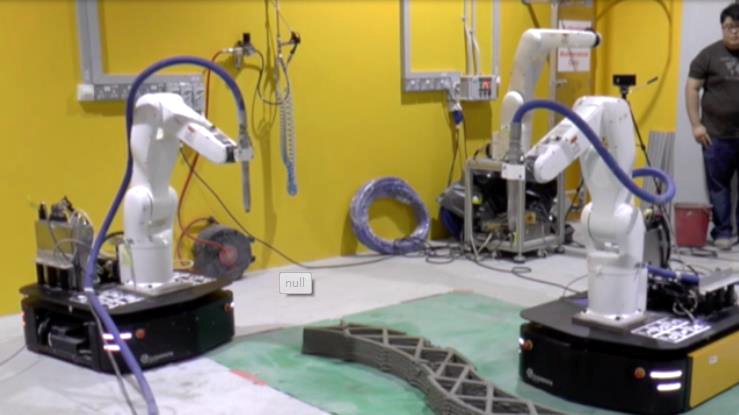
Tech & Sci
20:56, 29-Oct-2018
3D swarm printing to build complicated structures even faster
Updated
20:40, 01-Nov-2018
By Miro Lu

Engineers at a university in Singapore have discovered a way to make multiple printers that print concert to save time on 3D printing and complicated construction.
Swarm printing is the concept of using multiple 3D printers simultaneously to work on a single project. While the concept is not new, this is the first time swarm printing was lifted out of the pages of research texts.
"The challenge is to plan the path well (the printers) can cooperate together without collision and also keep in good precision for the printing," said Dr. Li Mingyang, a research fellow at Nanyang Technological University, Singapore Centre for 3D Printing. He is part of the team of engineers who researched and developed the technology.
Each printer is made up of a robotic which sits on top of a moving platform. The printers receive information via sensors and computers. Right now, Dr. Li said they have successfully used three printers at the same time.
Practical use of this technology includes sending a fleet of these printers to perform construction jobs in places unsafe for humans. The printers, which can operate in space, can also be sent as an advanced team to Mars to build a safe habitat before the astronauts arrive.
However, those would require a lot more printing power. The algorithm and route-planning would need to be even more precise for more printers to work together, but the team is working towards that now, Dr. Li told CGTN.
While the first commercial 3D printer was invented in 1984, the technology has developed in leaps and bounds. The cost of 3D printing has also dropped by thousands of US dollars in recent years, according to Joseph Flynt, the founder of 3DInsider.
"There seem to be no limitations (for 3D printing)," said Flynt. "You can print musical instruments, jewelry, household items, and clothing accessories. Future potential looks at 3D printed homes, drones, vehicles, foods, and other human body parts."
Singapore's Housing Development Board (HDB), an arm of the government that deals with public housing, this year inked an agreement with Robin Village Development Pte Ltd. to conduct research into using 3D concrete printing for unique architectural forms and to expand construction capabilities.
However, for construction of a regular-shaped huge building, such as an apartment block, Dr. Li thinks 3D printer will not replace traditional construction completely.
"3D printing will find its own niche market. For example, if you have special designs on a building with complex shapes, or if you have smart buildings which need special multiple or materials, then these construction cars would be great for 3D printing technology."
(Top image: Two 3D printers working together to build a complex construct. /NTU Photo)

SITEMAP
Copyright © 2018 CGTN. Beijing ICP prepared NO.16065310-3
Copyright © 2018 CGTN. Beijing ICP prepared NO.16065310-3